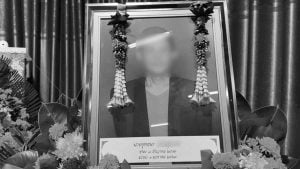Southern Philippines jolted by two strong earthquakes

The Philippines is recovering after two strong earthquakes hit the southern part of the country. Yesterday, a 6.0 magnitude earthquake struck at around 2pm, just a few kilometres from Maragusan municipality in the gold-mining province of Davao de Oro on Mindanao island.
The US Geological Survey says a shallower second quake, measuring 5.6 magnitudes, hit just three hours later in the neighbouring municipality of New Bataan. The second quake caused houses to collapse and forced the evacuation of nearly 300 residents from their homes.
Another 100 people inside a Tagum city shopping mall were hit by falling glasses and plates as they left the building, according to provincial information officer, Jay Suaybaguio.
“I was on the third floor buying office supplies when the quake suddenly struck.
“When we reached the first floor we saw broken bottles of wine and condiments. The lights went out but emergency lights turned on, helping us to find our way.”
The Facebook page of the Davao del Norte disaster agency showed photos of collapsed ceiling sections inside the Tagum shopping mall. The agency attributed the collapsing ceiling to the “series of earthquake incidents.”
According to Channel News Asia, the first quake lasted about 30 seconds and was followed by aftershocks. A police officer in Tagum, Stephanie Clemen, told AFP the quake was strong enough to cause fear.
“We immediately went under our desks and when the ground stopped shaking we went straight outside.
“We are still outside because a moderate aftershock just hit.”
The last major earthquake was in October 2022, with a 6.4 magnitude quake hitting the mountain town of Dolores in the northern province of Abra. It injured several people, cut off power to most of the region and damaged buildings.
Last July, another quake in the same area, but with a 7.0 magnitude, triggered ground fissures and landslides. That quake took 11 lives and injured several hundred.
The nation’s civil defence office regularly holds earthquake drills as the country sits along the Pacific “Ring of Fire,” which is an arc of seismic and volcanic activity. The ring stretches from Japan through Southeast Asia and across the Pacific.
As most earthquakes are too weak to be felt by humans, the strong ones are feared as they occur randomly with no technology available to predict them.
Latest Thailand News
Follow The Thaiger on Google News:


























